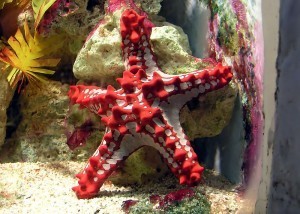Be a Starfish, Not a Spider
 Last week at the Sales and Marketing Summit in Las Vegas, Ori Brafman, talked to 600 of SEC’s members about the principles of an adaptive organization, or what he calls the starfish organization. But first, why should sales organizations care about becoming adaptive?
Last week at the Sales and Marketing Summit in Las Vegas, Ori Brafman, talked to 600 of SEC’s members about the principles of an adaptive organization, or what he calls the starfish organization. But first, why should sales organizations care about becoming adaptive?
At this year’s summit we argued that one of the clear implications of SEC’s last four years of research is that the world of sales has drastically changed. One catalyst for such a shift in the sales environment was the way in which customers’ buying habits changed. In a world of increasing buyer sophistication and price-driven sales, it will be those organizations capable of quickly adapting their selling approach (to teach customers commercial insights) that will ultimately survive this change.
As outlined in his book The Starfish and the Spider, Brafman argued that there are two types of organizations:
The traditional “spiders”?characterized by top-down leadership and hierarchical structures, and
The adaptive “starfish” organizations?which rely on the power of peer relationships.
The analogy refers to the fact that if you cut off a spider’s head, it will die. But if you cut off a starfish’s leg, it will grow a new one in its place. Brafman brought to life several examples of starfish companies such as Napster and Craigslist having commercial wins over spider organizations such as the record labels and the newspaper classifieds industry.
Even more interesting were the examples of traditional spider-like organizations such as IBM or the US Military, adopting starfish principles to increase their adaptability and in turn their ability to compete with the starfish companies of the world.
Brafman highlighted that companies that successfully embed starfish principles in their organizations:
Build an adaptive culture that changes the loss-adverse mentality of their employees
Empower all members of their organization to affect change, realizing that the best ideas are often the result of grass-root initiatives rather than top-down policies
Capitalize on the adaptive nature of the starfish generation (generation Y)
Build trust. In order to build adaptability, organizations must first build trust among their employees and create a culture of personal ownership and contribution.
How is your organization adapting to changes in the sales environment?
SEC members, read more about our 2013 Research Study to learn why organizations with spider-like cultures are destined to fail.
Brent Adamson's Blog
- Brent Adamson's profile
- 9 followers



